Our Project is a Cultural center Located in Dresden (East Germany) on a small Plot trapped with close buildings from the northern and southern sides. The goal of this Sustainable study is to analyze the design form and, the envelope and to optimize its building performance and Urban Impact.


Yearly Climate Analysis
General Climate Overview:
Our scrutiny of the annual climate in Dresden reveals a consistent temperature pattern, with steady readings hovering around 20 degrees Celsius between May and September. This favorable range not only allows for natural ventilation but also ensures minimal impact on interior temperatures. However, it’s worth noting that humidity levels peak during morning hours, particularly in winter.
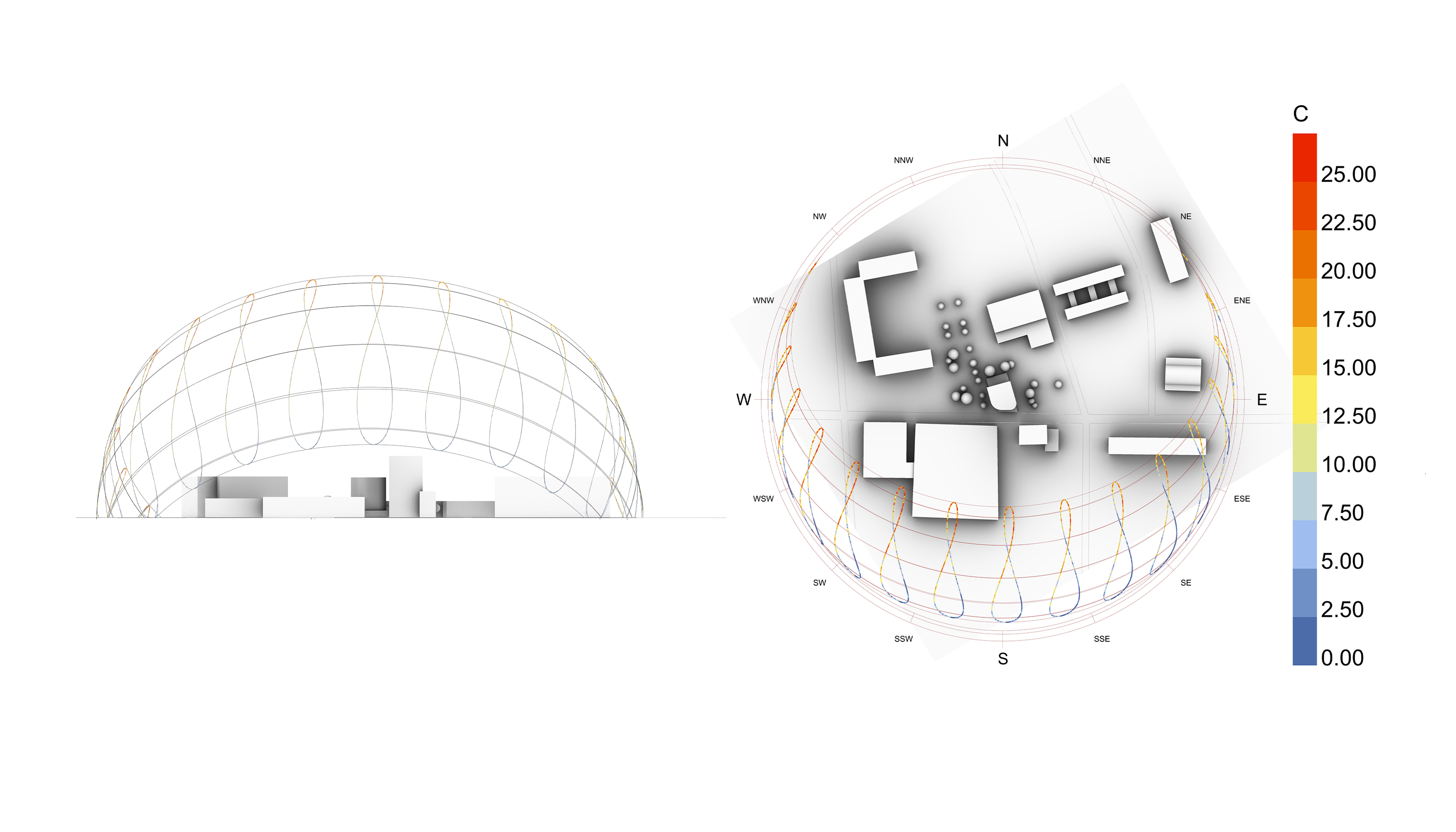
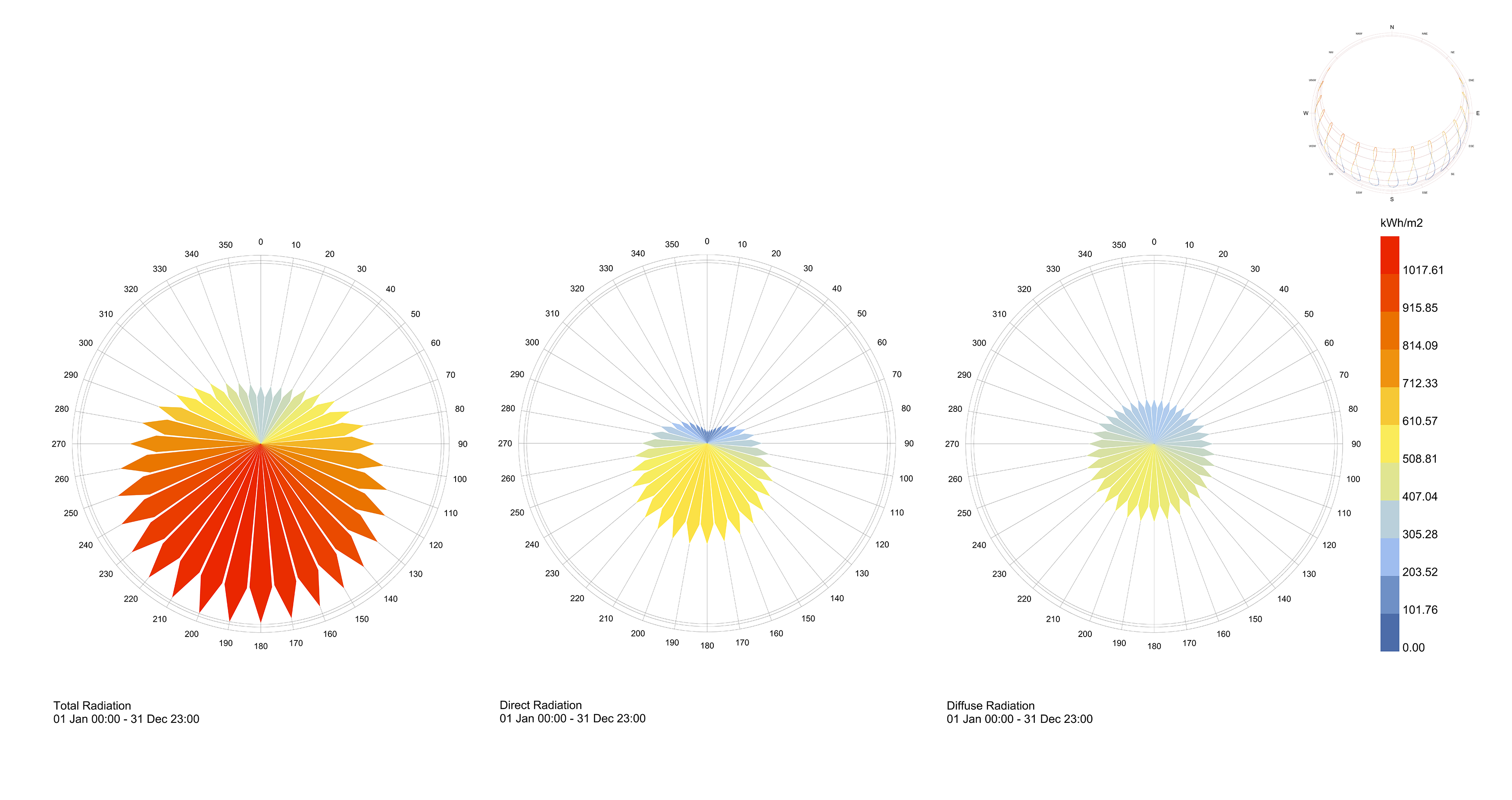
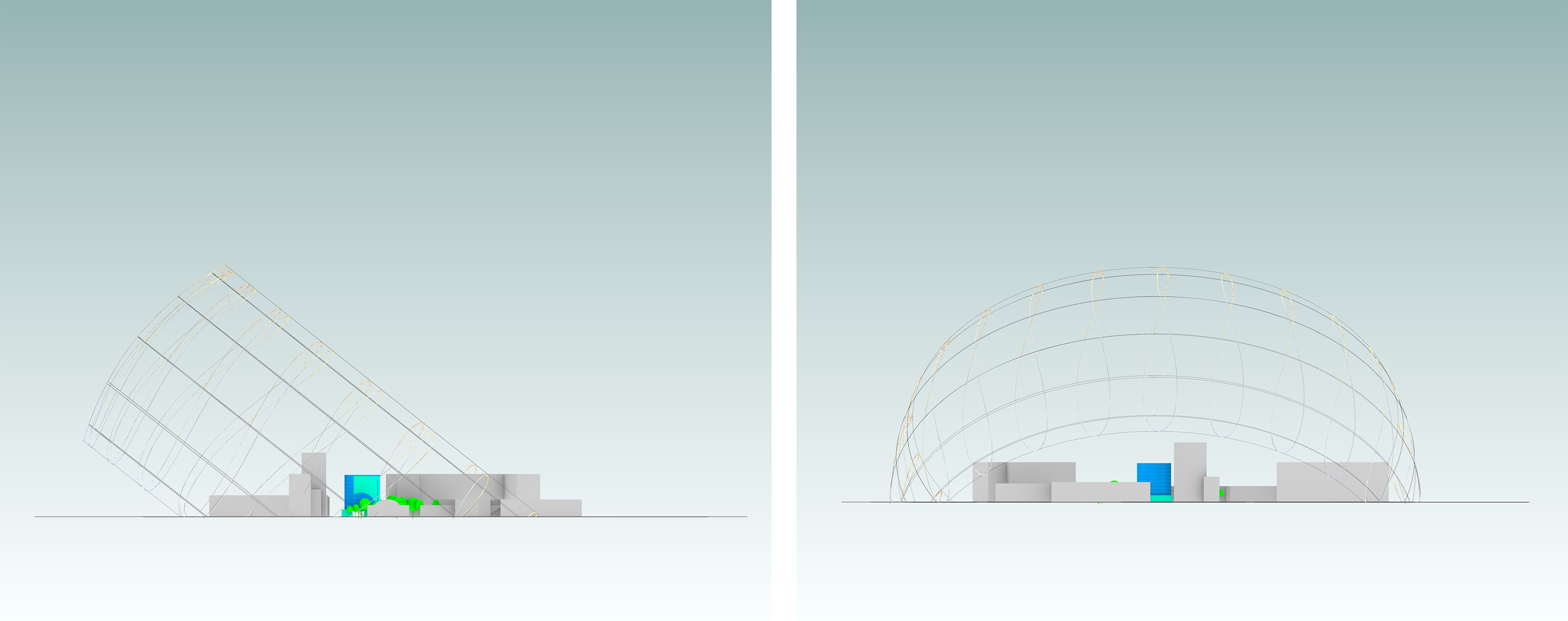
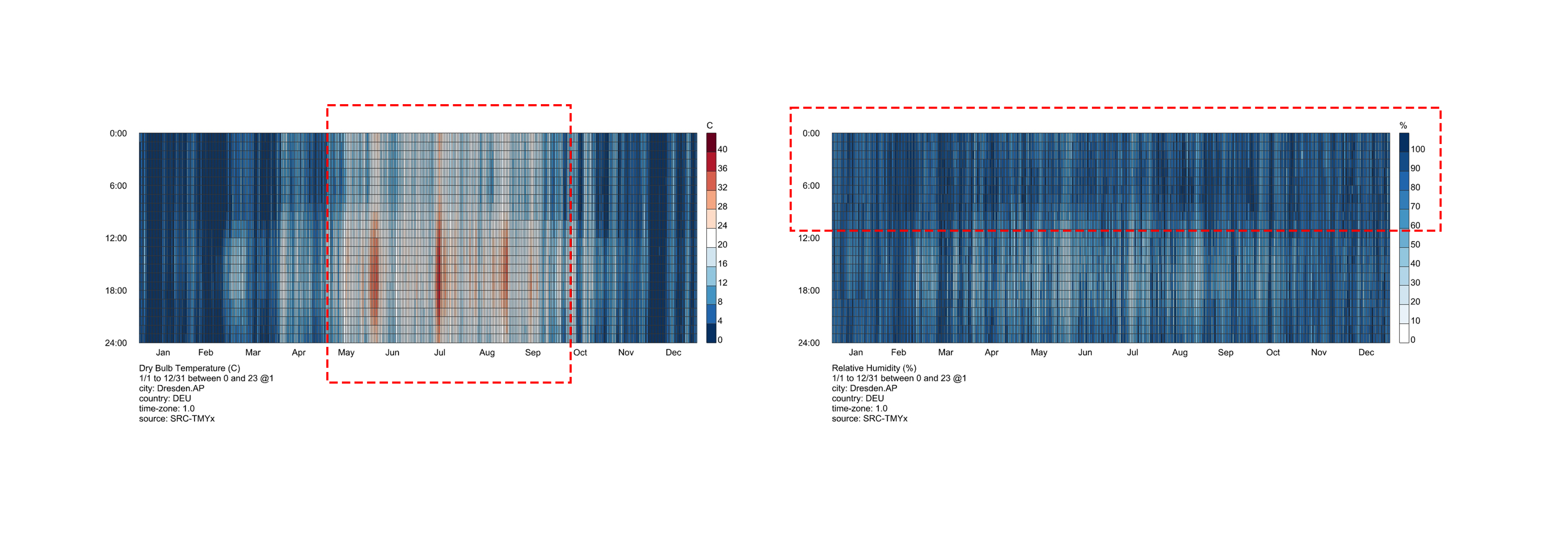
Optimizing Cross Ventilation:
By filtering temperature conditions between 18 and 26 degrees Celsius and wind speeds exceeding 0.5 m/s, we pinpointed the most conducive hours for cross-ventilation. The prime window for this natural cooling phenomenon occurs from 12:30 to 18:00, spanning the months of May to September. This strategic timeframe aligns with the middle of the day, ensuring optimal airflow and ventilation efficiency.
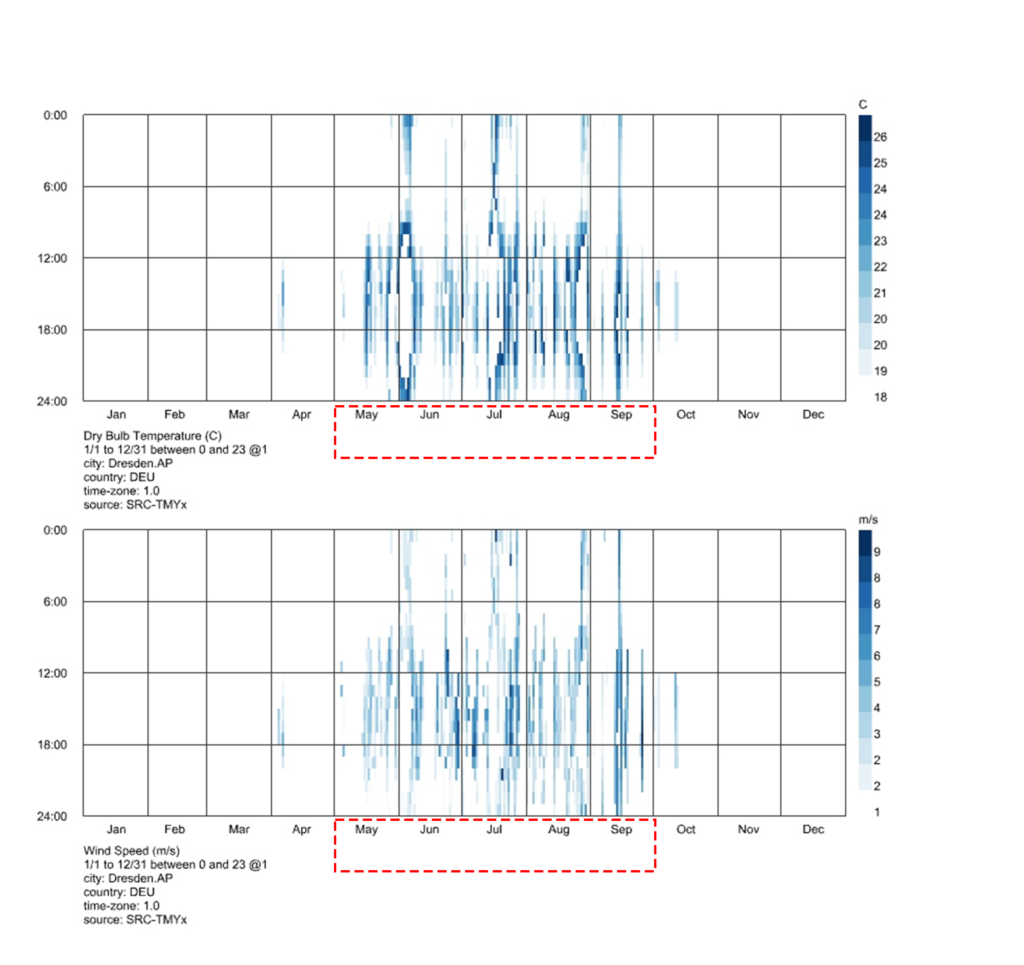
Adapting to Seasonal Variations:
The contrast in humidity levels during summer opens the door to embracing semi-open spaces within the Cultural Centre. These spaces not only harness the benefits of natural ventilation but also provide users with an immersive experience of the outdoor climate within the building. Conversely, the cold, humid winters necessitate a robust building performance to maintain indoor thermal comfort.
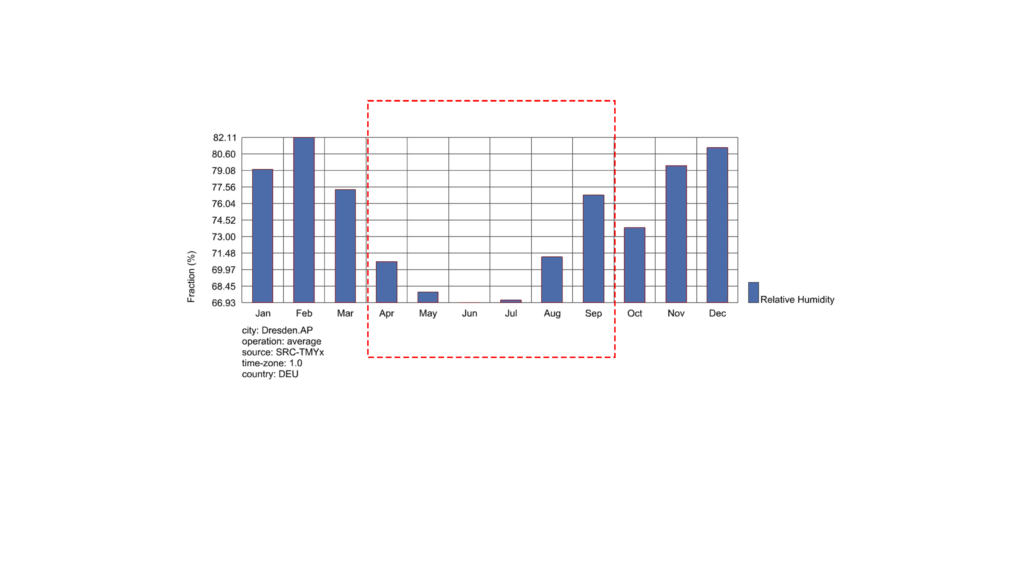
Low humidity levels during summer are also suitable for natural ventilation and encourage the use of semi-open spaces that enable the user to experience the outdoor climate inside the building. Humid, cold winters require good building performance when it comes to indoor thermal comfort.
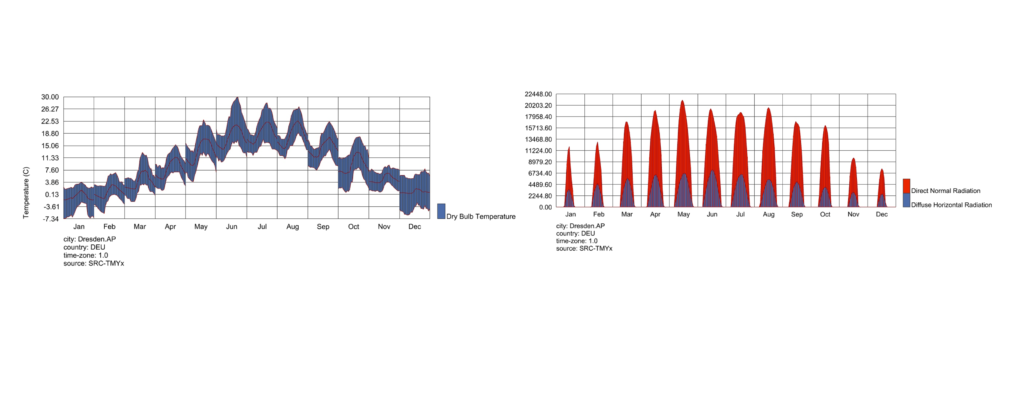
Four-Season Design Approach:
With temperatures dipping below freezing in winter and rising to an average of 23 degrees Celsius in summer, our design philosophy embraces the challenge of a four-season climate prevalent in central Europe. This approach mandates a delicate balance—protecting elements from harsh winter conditions while allowing nature to seamlessly infiltrate the building visually and experientially during the warmer months.
Thermal Comfort Analysis
Optimal Thermal Comfort:
The strategic approach to natural ventilation aligns seamlessly with our findings on indoor thermal comfort, particularly from May to September. During this period, the synergy between the natural ventilation strategy and the Universal Thermal Climate Index (UTCI) analysis becomes evident. The outstanding indoor thermal comfort experienced during these months solidifies the effectiveness of our design choices.

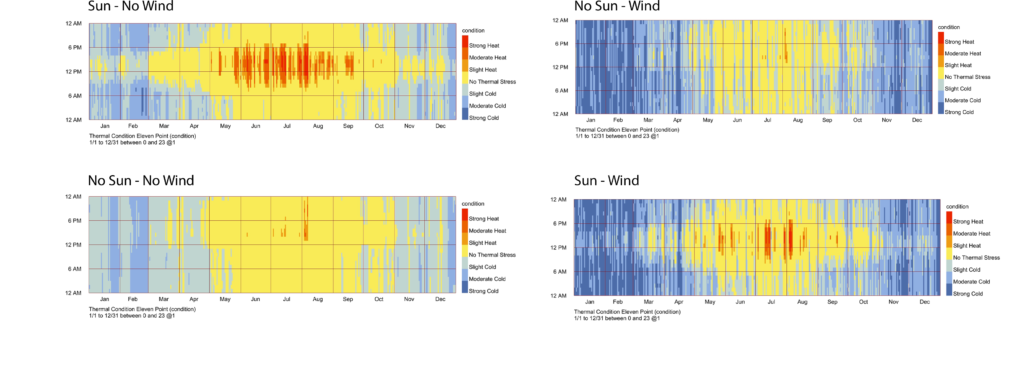
UTCI Analysis Insights:
The UTCI analysis further reinforces the four-month seasonal pattern, with May to September emerging as the peak of thermal comfort indexes. This aligns harmoniously with our architectural strategy, showcasing a thoughtful understanding of how the built environment interacts with the natural elements to optimize comfort for occupants.

Influence of Activity on Thermal Comfort:
Our exploration into the psychometric chart analysis unveils a 30% improvement in thermal comfort, underscoring the significant impact of activity levels on occupants’ well-being. This emphasizes the dynamic nature of our design, accommodating varied states of activity while maintaining a consistent and comfortable indoor environment.
Daylight Analysis
The urban solar study reveals a positive impact on the contextual environment, with no adverse effects observed during both summer and winter. The presence of neighboring buildings and trees plays a pivotal role in mitigating potential drawbacks. However, the neighboring high-rise structure poses a challenge by obstructing the low winter sun, leading to reduced sunlight hours on the southern façade. This obstacle can be effectively addressed by either rotating the building or strategically placing main functions on the east and west sides of the facades. Additionally, the solar exposure on the roof and upper floors presents an opportune canvas for solar energy harvesting. Meanwhile, careful consideration is warranted for incident radiation openings on the lower floors, necessitating adjustments in dimensioning to offset the radiation difference.
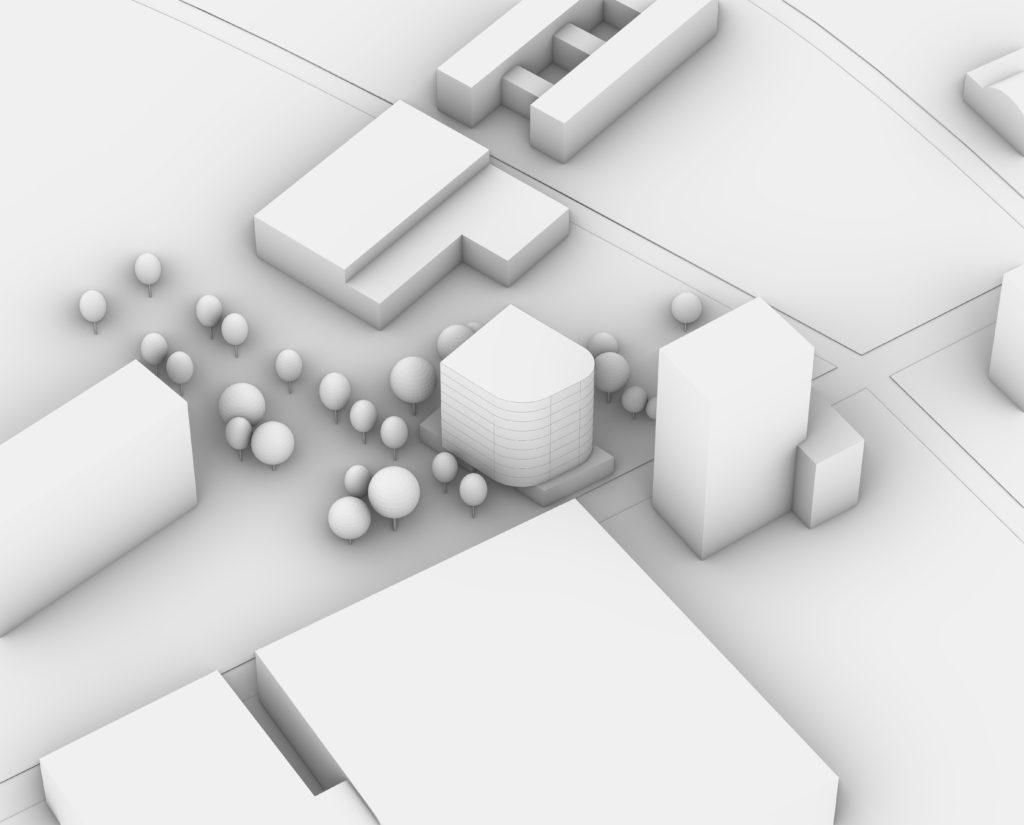
Direct Sun Hours Massing

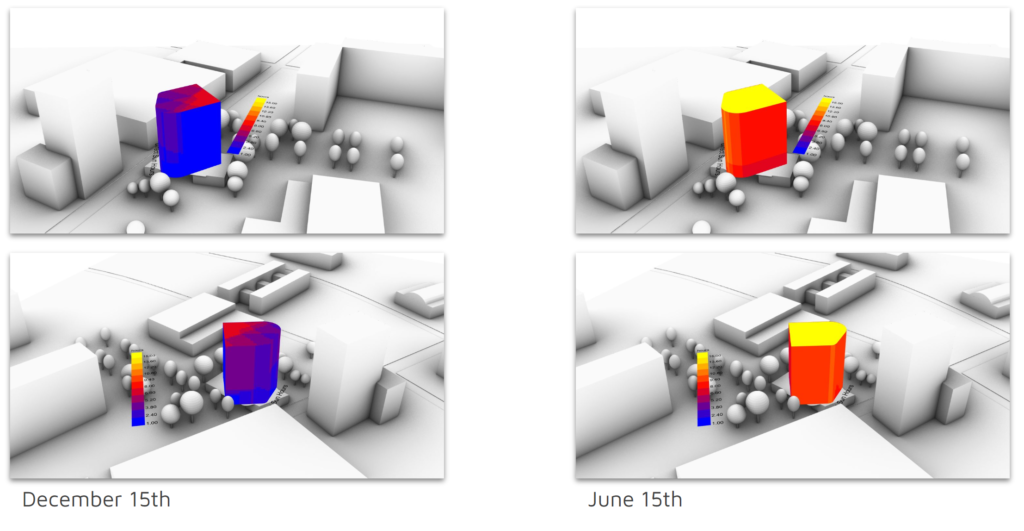
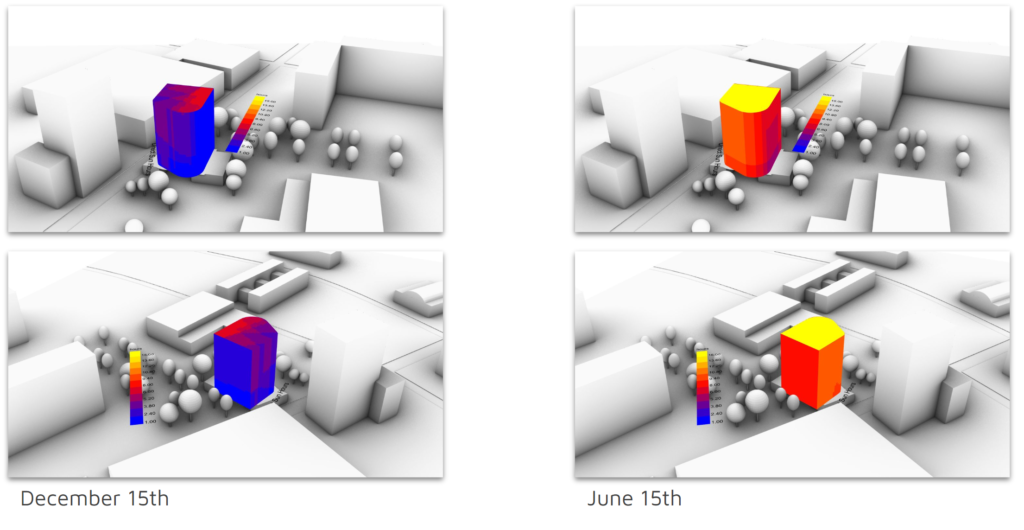
Direct Sun Hours Openings



Incident Radiation
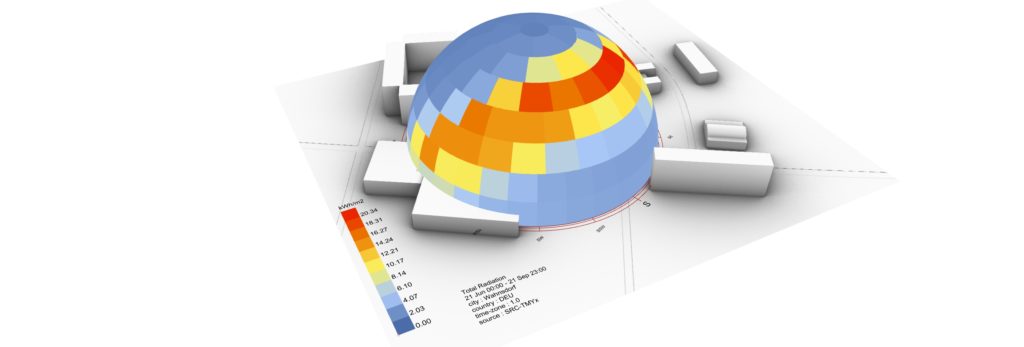
September 21st-December 21th

June 21st-September 21st

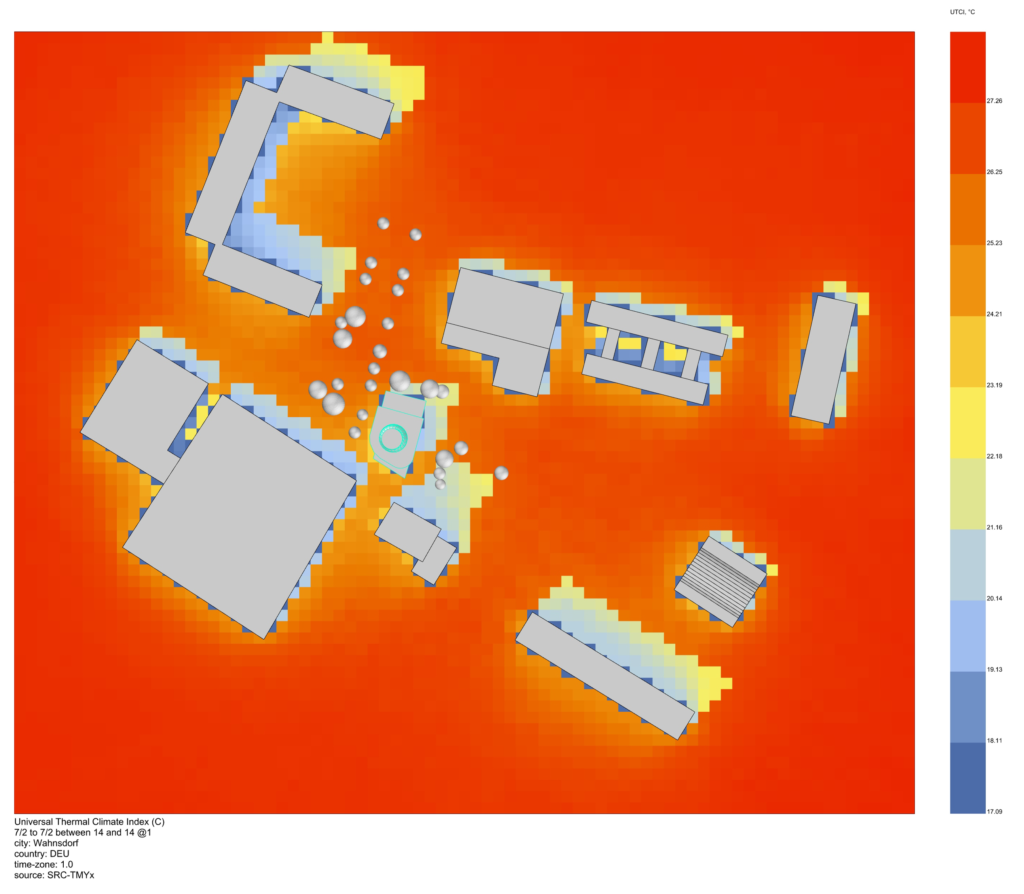
Incident Radiation Facade
June 21st-September 21st



Incident Radiation Openings



Indoor Comfort
A comprehensive study of window dimensions indicates that a minimum of 7 windows per facade, each measuring 4.3 m², fulfills both the EU Daylight Factor (2.1%) and the minimum German daylight Factor (2.2%). Delving into the analysis of facade shading elements, a density of 0.25 is noted to reduce the daylight factor by 36% and the sky view by 33%. Strategic improvements, such as altering the direction and density of these elements, hold the key to optimizing the balance between daylight penetration and aesthetic considerations.


Recommended daylight factor in Germany: 2.2% (minimum), 3.6% (medium), 5.4% (high)
EU recommendation: 2.1%
The last two iterations with approx. 7 windows per facade and 4,3 m2 / 5,8 m2 window sizes fullifill the EU requirements.

The multi-story design, while posing no negative solar impact on the context, offers potential enhancements through rotation for improved solar harvesting. A recommended minimum window area of 4.2m² is advised, with adjustments required at lower levels and areas where shading elements are employed to maintain a harmonious balance between interior illumination and solar efficiency.
Wind Analysis
Wind Rose Diagram and Local Winds:
Our wind analysis commenced with an exploration of the wind rose diagram, overlaid on our site. Dresden experiences prevailing winds from the South West throughout most seasons, with a peak speed of 17 meters per second. The average annual speed, as depicted in the diagrams, stands at 10 meters per second.
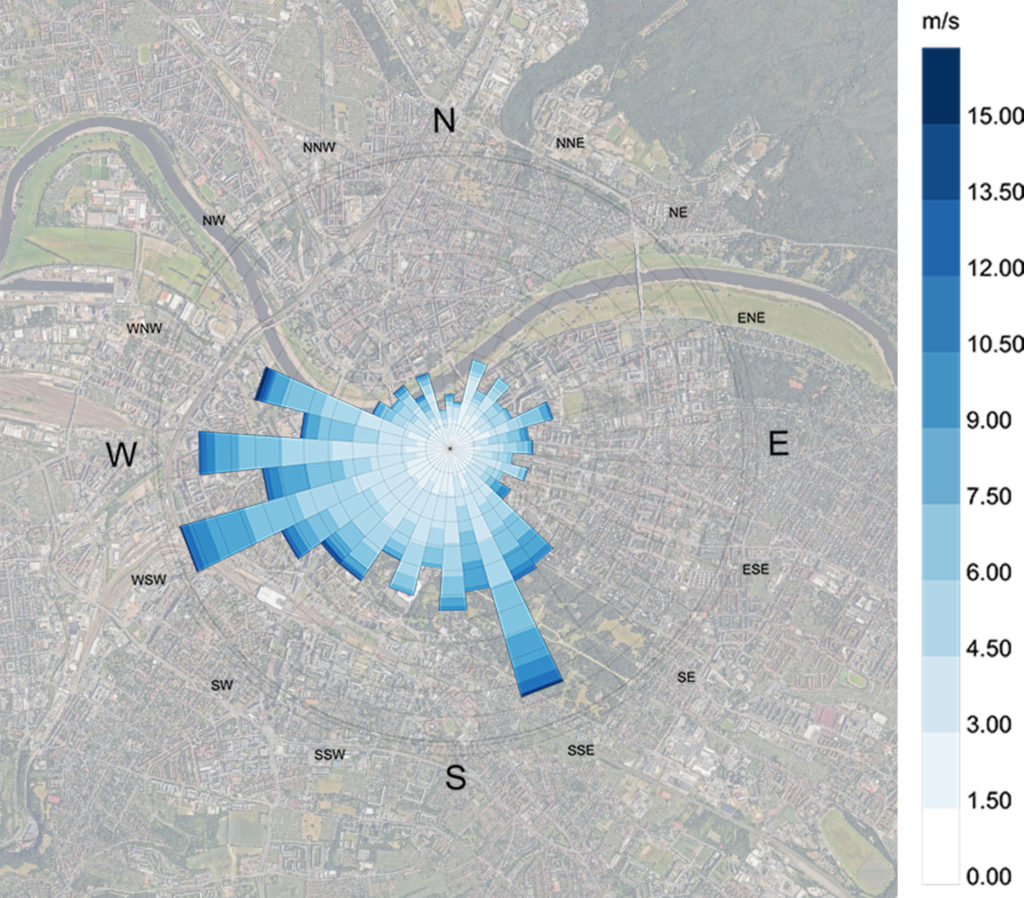
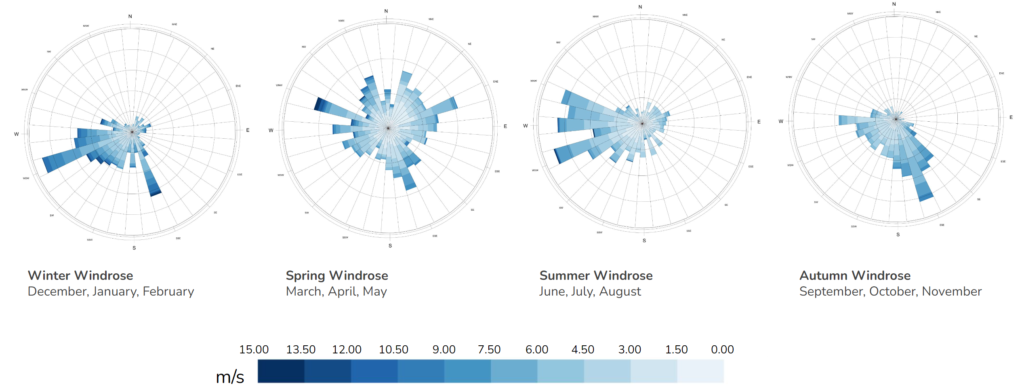
Wind Tunnel Testing:
To delve deeper into wind dynamics, the site underwent wind tunnel testing, examining wind pressure in relation to neighboring contexts and tree formations. Wind simulations, utilizing data from wind roses, indicated that wind speeds generally remain below 5 meters per second.
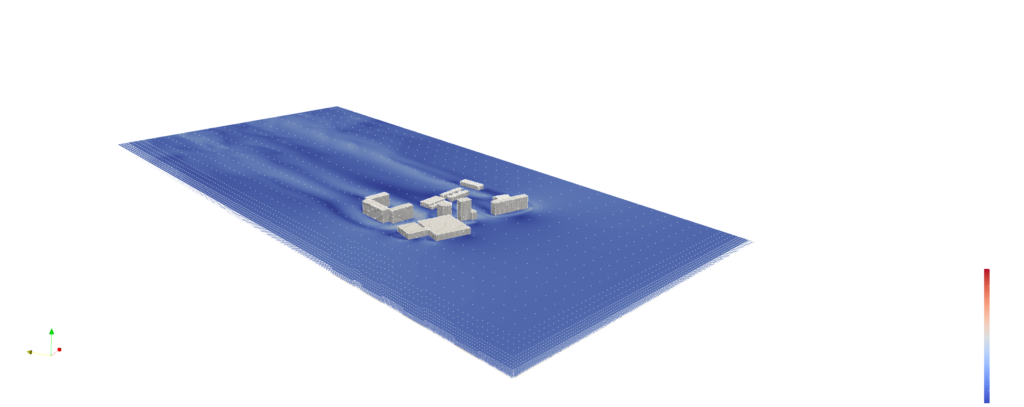

Eddy 3D Computational Fluid Dynamics (CFD) Analysis:
Further refinement of our wind analysis involved employing Eddy 3D for computational fluid dynamic simulations, utilizing OpenFOAM. Each simulation, spanning over 2500 iterations for more than 12 hours, elucidated the most dominant points of interest. Visualization tools, such as paramviewer, showcased converged parameters from the wind tunnel test.

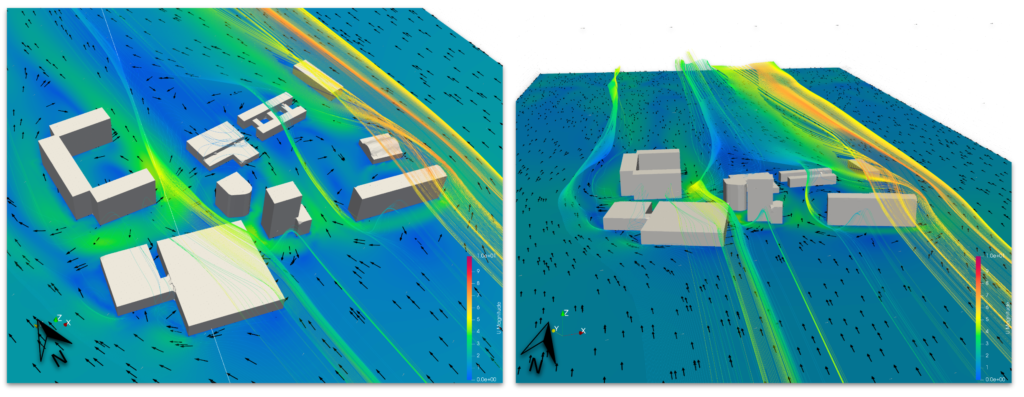

Design Response:
Visualizations highlighted wind acceleration between our building and adjacent volumes, prompting the introduction of a slight curvature in our building volume.
InFraReD.city AI Tool
Infrared simulations show in just a few seconds detailed insights, revealing safe wind speeds, predominantly around 5.4 meters per second, posing no threat to the surrounding area.

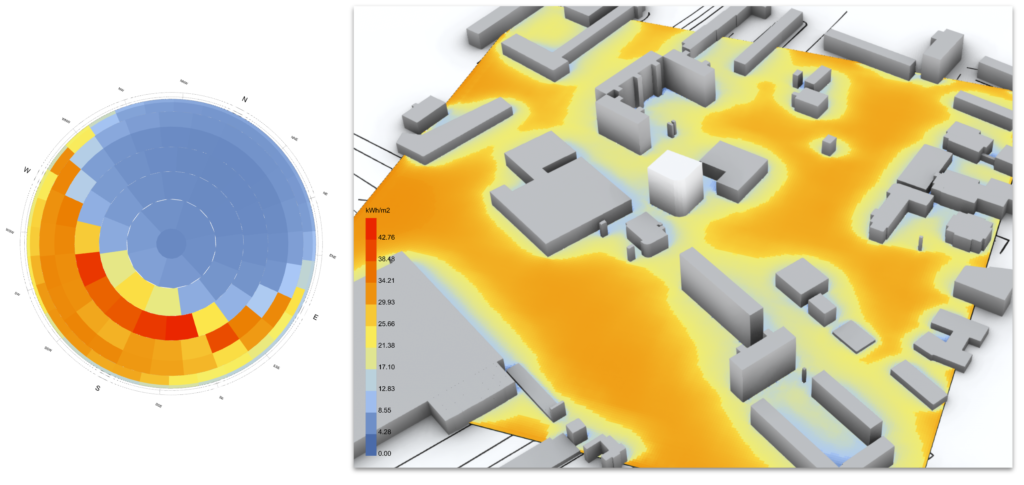
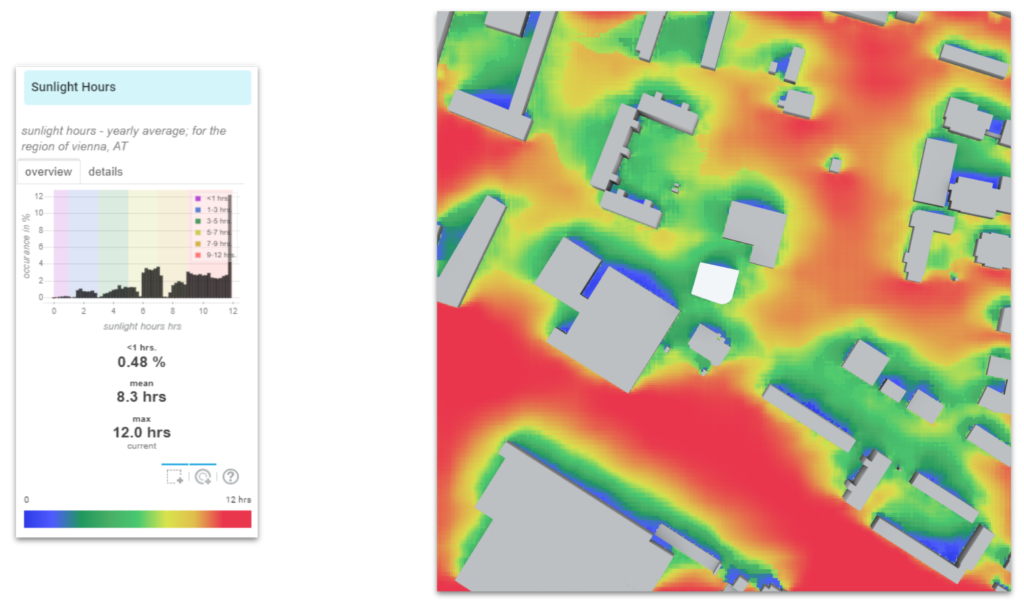
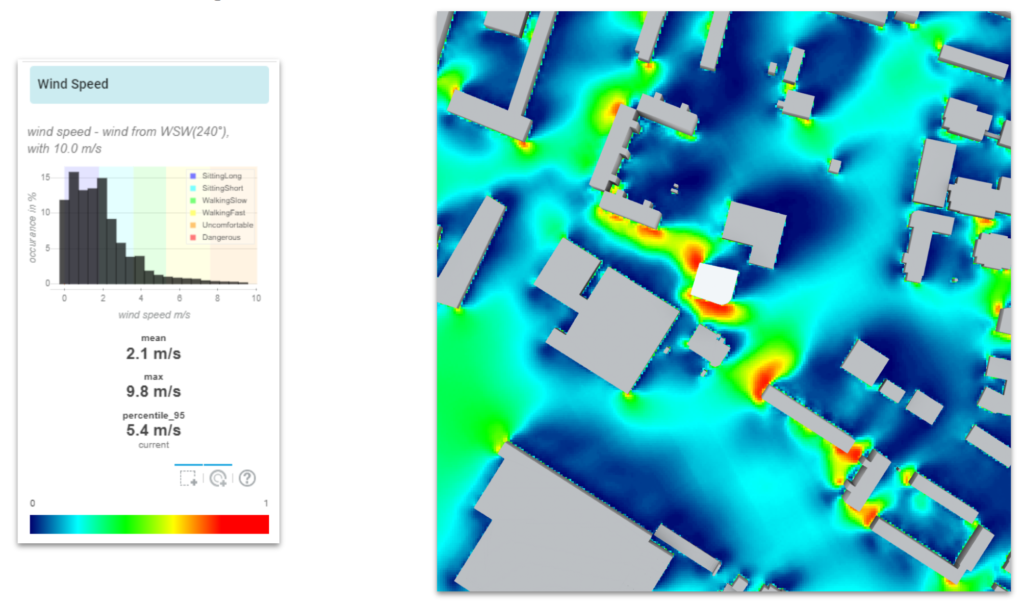
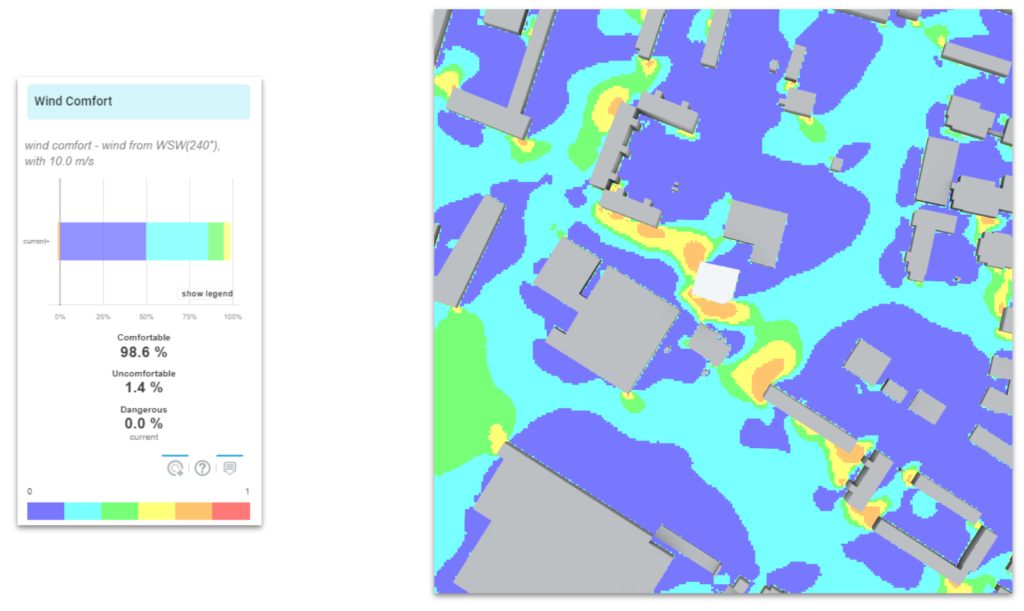
Conclusion:
The multi-story design has no negative solar impact on the context, but rotating the form and could improve its solar harvesting and aerodynamics. The minimum window area of 4.2m² is recommended and has to be increased at the lower levels and where the shading elements are applied. The optimal thermal comfort from spring to early autumn allows the design to have a wide variety of spaces open to the outdoors climate while keeping in mind the need of effective building isolation for winter months.

